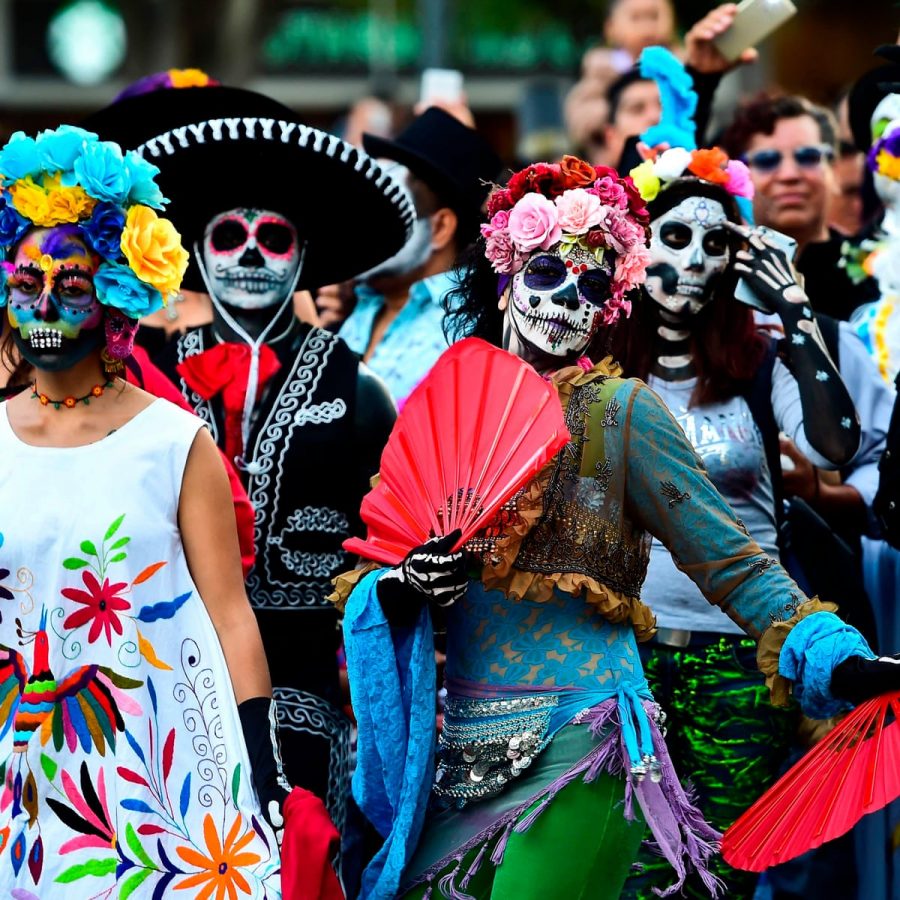El Día de los Muertos
November 8, 2021
We’ve all heard of El Día de los Muertos, or Day of the Dead, a well-known Mexican holiday where people celebrate their passed loved ones and welcome them back into the world. This colorful holiday has countless unique traditions and customs as well as a strong history.
Día de los Muertos is celebrated on November 1st and 2nd in Mexico and some other Latin American countries. However, traditions vary depending on the country. November 1st is specifically El Día de los Angelitos, Day of the Little Angels, and it’s believed that the spirits of the deceased children reunite with their families for 24 hours. At midnight of the next day, the celebration shifts to honor the spirits of passed adults. El Día de los Difuntos, or Day of the Deceased, takes on a more mature celebration, with tequila and pan de muerto, but is just as fun nonetheless. The finale of Día de los Muertos occurs later that day when people come together in their cities for huge celebratory parades, where many are dressed in elaborate costumes and wear calavera face paint.
Families decorate ofrendas, or altars, to honor their deceased relatives. They ornament them with marigold flowers which represent the beauty and fragility of life and create a path to lead the dead. Additionally, photos and items of memory and or significance are also placed on the ofrendas. The ofrendas are meant to encourage the dead to come and join the celebration. Calaveras, or skulls, are abundant during Día de los Muertos. They take many different forms such as sugar skulls, clay decorations, and of course, face painting. The distinctive artistic style of the calaveras includes a smile, for the purpose of laughing at death itself.
Día de los Muertos originates from Colombian Mesoamerica. The Aztecs and other Nahua people believed that upon dying, a person travels to Chicunamictlán, the land of the dead. Only after nine challenging levels and a journey of several years would a person’s soul reach Mictlán, the ultimate resting place. In Nahua rituals honoring the dead, family members would provide food, water, and tools to support the dead in their difficult journey. These practices developed into what we now know as modern-day Día de los Muertos traditions.
El Día de los Muertos is an amazing holiday with numerous special customs and a compelling history. It shows that we can remember and honor those who have left this world, while at the same time celebrating their lives and their new beginnings.
Works Cited
“Day of the Dead (Día de los Muertos).” History, A&E Television Networks, 30 Oct. 2018, www.history.com/topics/halloween/day-of-the-dead. Accessed 24 Oct. 2021.
“Day of the Dead (Dia de los Muertos).” Day of the Dead Holiday, dayofthedead.holiday. Accessed 24 Oct. 2021.
Schemidt, Ronaldo. People Dressed as ‘Catrina’ for Day of the Dead Parade in Mexico City, Mexico. The Guardian, www.theguardian.com/world/2017/oct/31/mexicans-embrace-day-of-the-dead-spectacle-in-place-of-halloween. Accessed 24 Oct. 2021.


Sarah Myers • Feb 6, 2022 at 12:11 pm
As you can see I just realized that I had not read this article but stumbled across it as I was going through some messages I missed. Thanks so much for this wonderful article!